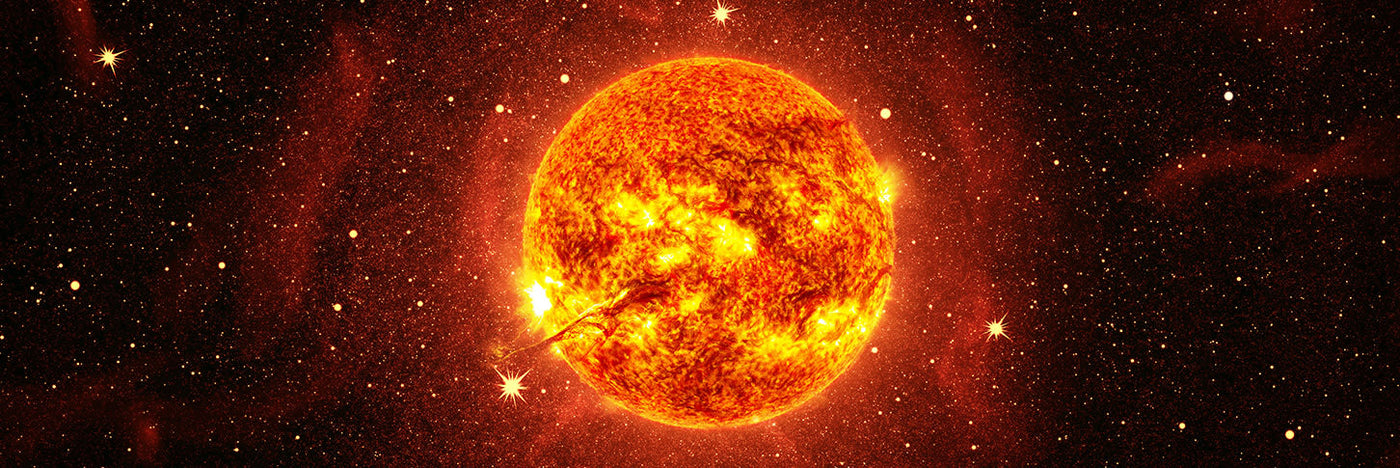
The Sun
The Sun is the largest star in our solar system and at the same time the closest to Earth. In the outer third of the entire Milky Way, however, it is only an average-sized star. In order to be able to understand the dimensions a little better, we present some data for comparison below. We also talk about the importance of the Sun, both from an astronomical and astrological point of view.
Facts about the sun
With a diameter of 1.4 million kilometers, the sun is about 110 times as large as the earth. It contains 99.86% of the mass of our solar system - the remaining 0.14% is distributed among all other planets. Thus it has 700 times more mass than all the planets of our solar system together.
The term "solar activity" refers to the changing number of sunspots associated with strong magnetic fields. Those sunspots are dark spots on the visible surface of the sun. They are cooler and therefore emit less visible light.
As expected, the temperatures are particularly high: on the surface of the sun they are about 5,527 °C, while the sunspots are only about 3,526 °C hot. However, it is many times hotter in the core of the sun. Here the temperature reaches about 15,599,726 °C!
Importance of the sun from an astronomical perspective
The sun gives us on earth both light and warmth. Because of this it creates life, because every living being, plants, animals and humans need light and warmth to survive. Without the sun there would be no rain either: Its warmth ensures that the existing water evaporates and rains off in other places. In addition, wind exists only thanks to the sun. Since it does not warm all parts of the earth in the same way, movements occur.
Importance of the sun from an astrological point of view
In astrology, the sun stands for the projection of the divine self. It gives us humans our self-confidence, our life force, our vitality and our willpower. Especially in former cultures it was worshipped with rituals. Until today it has an influence on the zodiac signs of different cultures.
Published